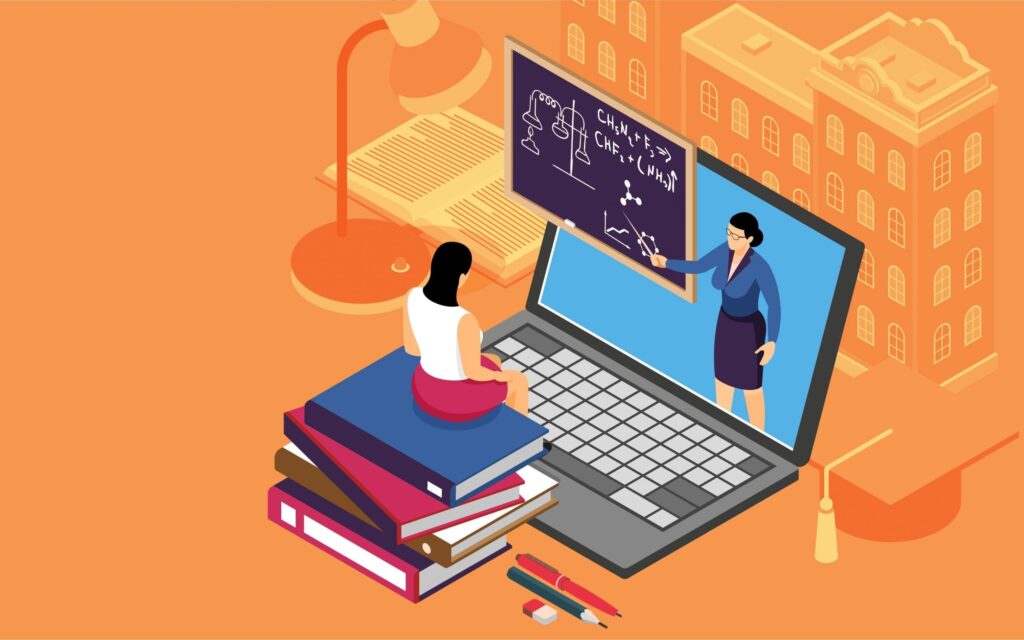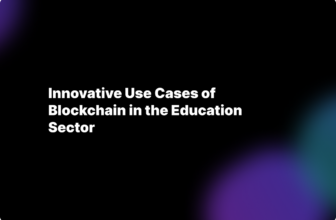
Over the past few decades, an educational transformation has been quietly unfolding, driven by the proliferation of digital technologies and the evolution of pedagogical techniques. A striking testament to this transformation is the swift rise of online educational tools, often termed the cyberspace classroom revolution. In this article, we delve deep into this swiftly progressing landscape, exploring how it is reshaping the teaching and learning experience, the potential obstacles it brings, and the innovative solutions it offers.
Table of Contents
Trends in Online Education Tools

Source: hospitalityinsights.ehl.edu
The increasing prevalence of digital devices and internet connectivity has ushered in a wave of inventive online educational instruments. New entrants to this space range from interactive platforms, which host a variety of media-rich courses, to intelligent tutoring systems that adapt to individual learners’ needs. For instance, virtual learning environments (VLEs) offer immersive experiences, reimagining the classroom as an engaging, multi-dimensional space that transcends geographical boundaries. Just look at all the Techno Tutor testimonials that talk about the benefits of Internet learning solutions.
The surge in data analytics applications is another powerful trend in redefining online education tools. Learning analytics platforms generate insights from learner data to personalize instruction and improve learner outcomes. These tools enable educators to predict difficulties, modify instruction, and provide real-time feedback, enhancing the learning experience and promoting student success.
Impact on Teaching and Learning
Embracing digital teaching instruments is revolutionizing the dynamics of education. For educators, these tools provide greater flexibility in teaching styles, promoting active learning, and fostering a more student-centered approach. They allow for the creation of engaging multimedia content, instantly accessible resources, and the possibility of real-time interaction with students, irrespective of geographical constraints.
On the learner’s side, these tools facilitate personalized, self-paced learning. Through AI-driven adaptive systems, students can learn at a rhythm that suits their comprehension levels and interests, enhancing their motivation and engagement. Additionally, these tools provide learners with real-time feedback, enabling them to continuously monitor their progress, identify areas of improvement, and take control of their learning trajectory.
Challenges and Solutions in Implementation

Source: cio.com
Despite the many advantages, the incorporation of online learning tools is not devoid of challenges. Among them, issues of access and digital literacy stand out. Not all students have equal access to the necessary technology or the digital skills required to navigate them effectively, leading to a digital divide in education.
Addressing these challenges calls for concerted efforts at multiple levels. Policy-level interventions can help bridge the digital divide by promoting affordable and universal access to technology and internet connectivity. At the school level, digital literacy programs can be implemented to empower students and teachers with the necessary skills to effectively engage with them.
Best Practices for Integration
To effectively embed online tools in educational settings, a thoughtful and strategic approach is crucial. Initially, understanding the unique needs, abilities, and goals of learners is essential. This understanding aids in selecting solutions that align with these needs, thereby maximizing their impact.
Secondly, teachers should be provided with the necessary professional development opportunities. Training programs focused on the effective use of these tools, the pedagogical shifts required, and the ability to troubleshoot technical issues can equip educators with the confidence and competence to navigate the digital landscape.
Empowering Students

Source: leverageedu.com
Online educational tools hold immense potential for empowering learners. They provide students with agency over their learning, allowing them to tailor the pace and style of study to their preferences. With options such as e-portfolios, students can showcase their learning journey, not only in terms of grades but as a holistic narrative of their academic and personal growth.
These tools foster a sense of independence and responsibility in learners. By actively participating in their education, setting goals, tracking their progress, and reflecting on their learning, students develop crucial skills for lifelong learning, such as self-discipline, critical thinking, and problem-solving.
Engaging Learners in the Fast-Paced World of Online Education
To captivate learners in this dynamic, digital education landscape, the creation of an engaging and inclusive learning environment is paramount. Gamification, a strategy involving the application of game mechanics in non-gaming contexts, is emerging as a powerful tool to boost learner engagement. Online educational platforms incorporating gamified elements such as points, badges, leaderboards, and challenges can promote a sense of achievement and competition, sparking motivation and enthusiasm in learners.
Interactive content is vital for creating an engaging online experience. Videos, animations, quizzes, simulations, and collaborative software can make complex information more digestible and enjoyable, helping to maintain students’ attention and facilitate deeper understanding.
Adapting Pedagogical Strategies

Source: bestcolleges.com
In the face of this paradigm shift, a radical reconsideration of traditional teaching methodologies is required. Instead of the one-size-fits-all approach, a personalized learning model, facilitated by adaptive learning technologies, is emerging as a promising pedagogical strategy. This model acknowledges the individual differences among learners and tailors instruction to their specific needs, interests, and styles.
Collaborative learning is being reimagined in the digital space. Using solutions such as virtual breakout rooms, discussion boards, and shared documents, educators can foster peer interaction and collaborative problem-solving, enhancing students’ communication skills and promoting a sense of community in the online environment.
Assessing and Evaluating Education
Online educational tools also bring novel approaches to the assessment and evaluation of learning. Traditional tests are often limited in their ability to measure complex, higher-order thinking skills. Digital tools can overcome this limitation through alternative assessment methods, like project-based assessments, which measure a broader range of abilities, including creativity, problem-solving, and collaboration.
The application of learning analytics in assessment practices also holds promise. By tracking learner interactions with the course content and among peers, learning analytics tools provide detailed insights into learner performance and engagement, enabling a more comprehensive and nuanced understanding of education.
Supporting Collaboration and Communication

Source: dynamicpixel.co.in
Beyond facilitating individual learning, online tools can foster collaboration and communication among learners. Collaborative document editors, discussion forums, and video conferencing software can replicate the social aspects of a physical classroom in the digital space, allowing learners to work together, share ideas, and build knowledge collectively.
They also provide platforms for constant and meaningful communication between teachers and students. Instant messaging, video chats, and discussion boards enable regular feedback and support, creating a sense of connectedness and community.
Final Reflections
The world of online education tools is a dynamic and rapidly evolving landscape. Its potential to transform teaching and learning is immense, but it also presents unique challenges that require thoughtful solutions. As we traverse this exciting frontier, it is crucial to remember that technology is a tool and should serve the overarching goal of education – to empower, engage, and nurture lifelong learners. Through careful integration, innovative pedagogy, and a commitment to equity, we can harness the power of these tools to foster a richer, more inclusive, and engaging learning environment. The future of education is here, and it promises to be an exhilarating journey.







